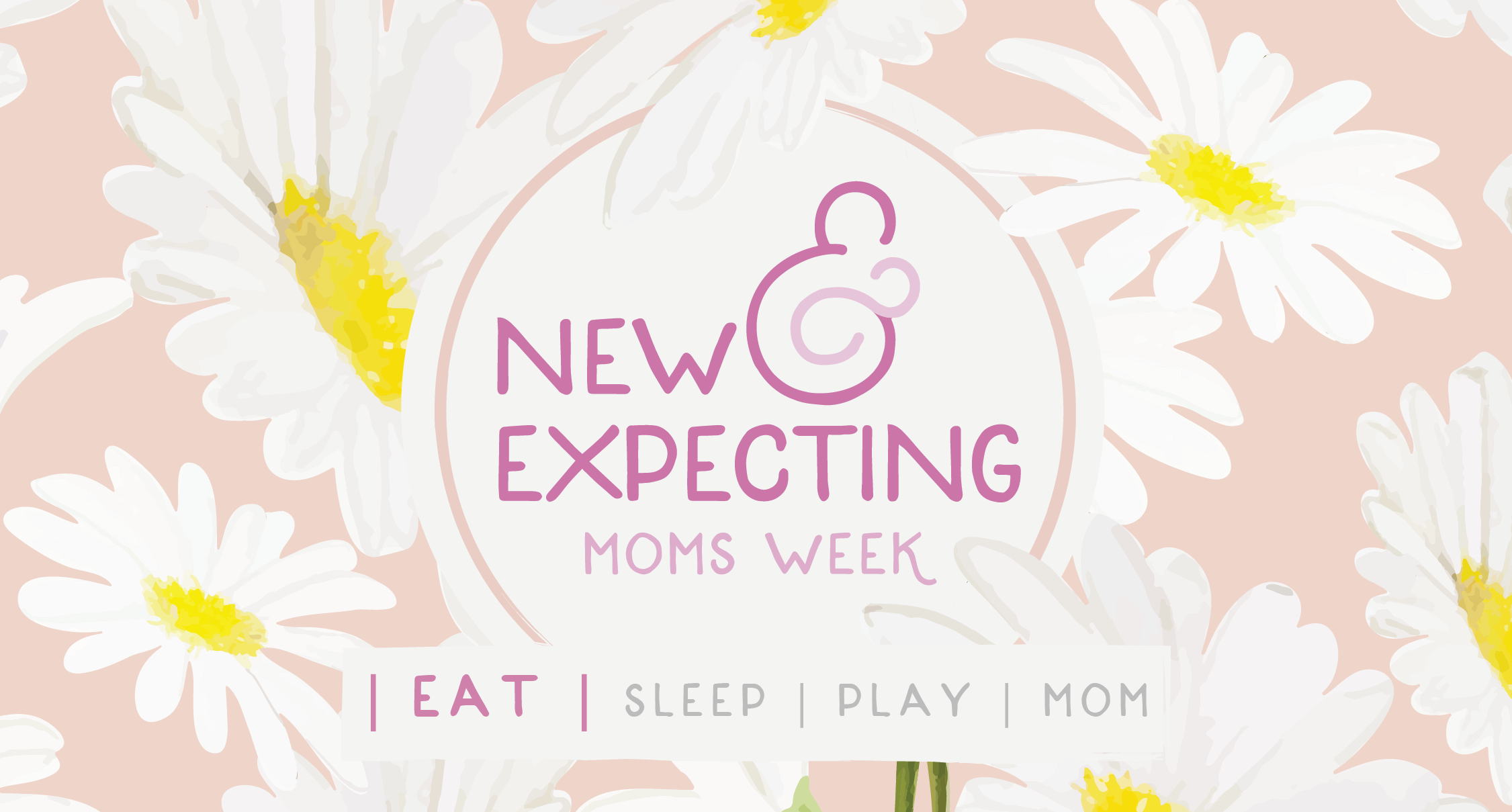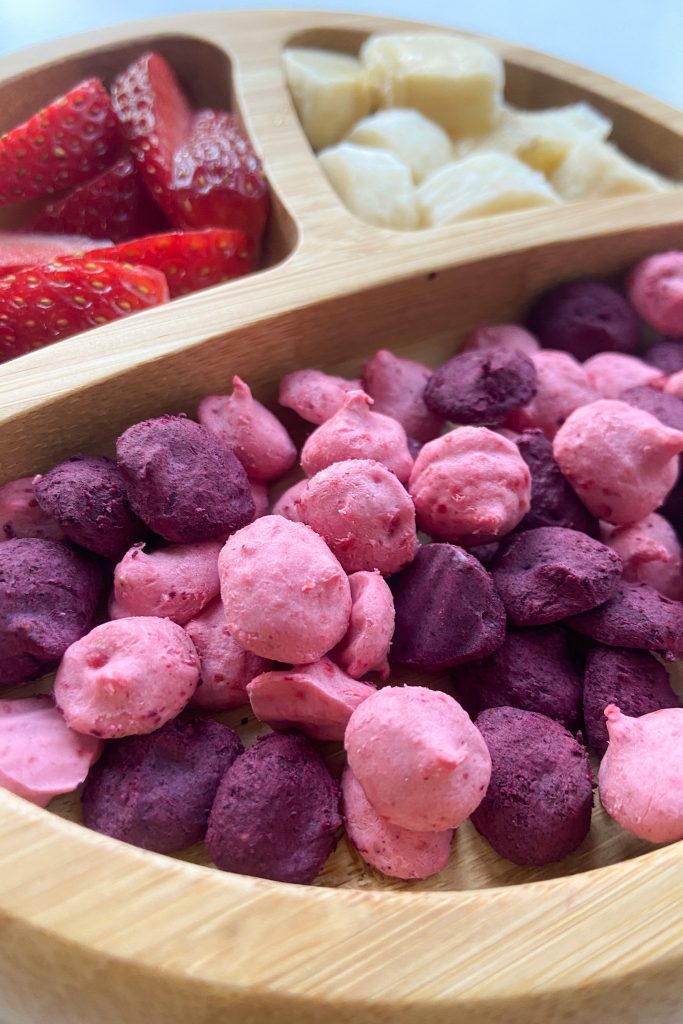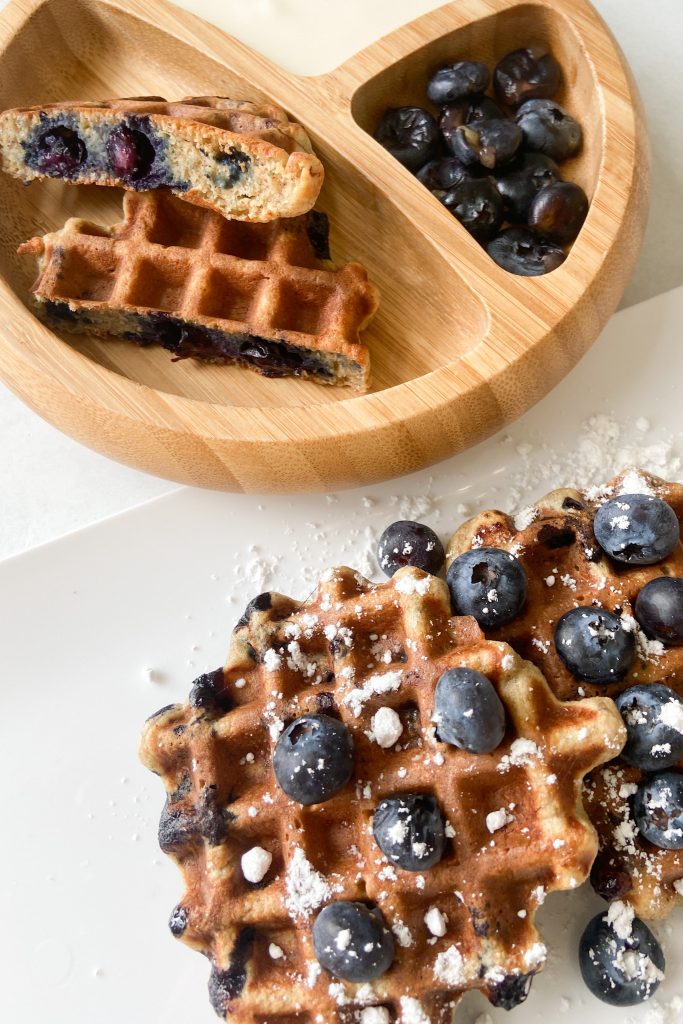
At City Mom Collective, we are dedicating a week to empowering and supporting new and expecting moms. Even though we have always been doing that for the past 10 years, this week, we are focused on four specific topics, EAT, SLEEP, PLAY, and MATERNAL HEALTH. Today we are focusing on EAT with Lily Payen!
Lily is food blogger, wife, teacher and Mama to three boys.
Lily Payen:: Feeding Tiny Bellies

I’m Lily! The mama behind Feeding Tiny Bellies. I’m here to help you take some of the stress out of meal times for your little ones. My goal is to create simple recipes with baby in mind that can easily be adapted for the entire family along with tips and ideas for navigating the feeding journey with ease.
Follow Lily on Instagram | Facebook | Pinterest | Feeding Tiny Bellies
Introduction to Baby-Led Weaning
Baby-led weaning is becoming more and more popular, and more parents and caregivers are gravitating toward this feeding approach. But what exactly is baby-led weaning?
Baby-led weaning (BLW) is a feeding approach for introducing solids to babies. With this approach, baby skips purees and jumps straight into self-feeding finger foods from the start. Baby is encouraged to explore foods independently and take full control when eating.
What are the benefits and challenges of baby-led weaning?
While there are many benefits to the feeding approach, it also comes with a few challenges.
Benefits:
- Time-saving – No need to create separate meals since baby can eat the same foods the rest of the family eats (with slight modifications).
- Self-regulation – Baby can control how much food to eat and is able to stop when full.
- Potential to Reduce Picky Eating – With baby-led weaning, babies experience tasting a large variety of food textures and consistencies; this may help babies develop an appreciation of different foods and hopefully reduce picky eating down the line.
- Coordination – Baby-led weaning is excellent to help baby practice coordination. Baby consistently practices hand-eye coordination and chewing skills during meal times.
- Promotes Independence – Babies have the liberty to select what and how much they want to eat and develop a sense of independence at an early age.
Challenges:
- Messiness – Giving babies the liberty to self-feed can definitely be messier than spoon-feeding! Fortunately, there are things that can help with overcoming the mess!
- Food Waste – Oftentimes, food goes to waste, especially during the food-throwing stage. Try offering small amounts at first and add more food if needed.
- Gagging – Gagging may occur, especially in the initial stages of baby-led weaning. This may cause parents to worry, however, this is a normal mechanism babies use as a defense against choking.
What are the signs of readiness to begin baby-led weaning?
These are some of the signs of readiness to look out for before you begin:
- Baby is at least 6 months of age.
- Baby can sit up unassisted with little to no support.
- Your baby has demonstrated good head control.
- Your baby’s tongue-thrust reflex is disappearing (the reflex that causes a baby to push objects out of their mouth to prevent choking).
- Baby has developed the coordination to be able to pick up objects and bring them to their mouth.
- Baby shows interest in solid foods.
One great thing about baby-led weaning is that it encourages baby to eat what you eat, so you don’t need to make separate “baby food.” With this in mind, it is important to note that foods must be cut appropriately in order for them to be considered safe to offer.
Beginners have something called the “palmar grasp” where they will use their entire hand to pick up objects. Foods cut into finger-length strips are easier for babies to pick up using their whole palms. Finger-length strips also help your baby learn how to take appropriate bites and chew. As they grow, they develop something called the “pincer grasp” where they will be able to pick up small objects with their index fingers and thumbs. Once your baby develops the pincer grasp, you may begin to offer foods cut into smaller pieces. For round objects, smash or quarter them lengthwise to remove the roundness.
Foods To Avoid/Limit
Babies can have most things, but there are some things that you may offer in moderation or not offer at all.
- Honey – Honey should not be offered to babies under the age of 1 due to the risk of infant botulism. Honey is often added to many prepackaged items, so be sure to read labels carefully before offering something to your baby.
- Meats, eggs, and seafood – Meats, eggs, and seafood should be fully cooked for children under the age of 5.
- Salt – Babies and toddlers only need a very small amount of salt in their diets. Babies, in particular, get most of this from breast milk or formula. Try to avoid offering foods that are high in salt. When cooking a meal for the entire family, it is a good idea to remove baby’s portion and add salt afterward.
- Sugar – It is recommended to avoid added sugars under the age of 2. Certain things are fine to offer in moderation, but there are several ways to sweeten items with natural sugars from fruits! Many babies and toddlers are content with sweet items that are naturally sweetened!
For more tips, meals plans and delicious recipes visit Feedingtinybellies.com.













